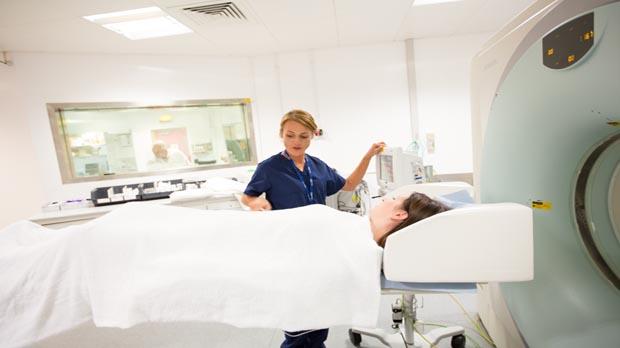
Last year in the UK over 60,000 cancer patients enrolled on clinical trials aimed at improving cancer treatments and making them available to all.
This trial was comparing different treatment combinations for people with myeloma.
Doctors usually treat multiple myeloma with chemotherapy. Those who are younger and fitter often have more intensive treatment. This means high dose chemotherapy with a stem cell or bone marrow transplant.
People with myeloma may also have one of a group of drugs called bisphosphonates. Bisphosphonates help to prevent bone fractures and bone pain in people with myeloma. They may also help to treat the disease.
People may have bisphosphonates such as clodronate (Bonefos) or pamidronate. In this trial doctors compared clodronate to another bisphosphonate called zoledronic acid (Zometa, or zoledronate) to see which was better.
Thalidomide has been shown to slow the growth of myeloma cells. But doctors weren’t sure at what stage people should have thalidomide, what dose they should have, or how long they should have it for. In this trial some people had thalidomide straight away, alongside chemotherapy. Some had thalidomide after other treatment (maintenance therapy), and some didn’t have thalidomide at all.
The aims of this trial were to
The trial team found that
The trial recruited 1,970 people. It was a randomised trial. The people taking part were put into treatment groups by computer. Neither they nor their doctor could decide which groups they were in.
According to how fit they were, they initially had 1 of 4 chemotherapy treatment plans. There were 2 types of intensive treatment chemotherapy
And 2 types of non intensive chemotherapy
The researchers looked at the number of people whose myeloma completely disappeared (a complete response) and the number whose myeloma got a bit better (a partial response).
Of the people having intensive therapy, those who had a complete response or a very good partial response was
The number of people having non intensive therapy who had a complete response or very good partial response was
Everybody taking part was also randomised to have either zoledronic acid or clodronate with their chemotherapy. Overall, the average length of time that people lived was
And the average length of time that people lived without any signs of their myeloma getting worse was
The side effects of the 2 bisphosphonate drugs were similar, but 4% of the people having zoledronic acid developed a rare condition called osteonecrosis of the jaw, compared to less than 1% of the people having clodronate.
After having chemotherapy, 818 of the people taking part were randomised again. Half had thalidomide maintenance therapy and half did not.
The trial team looked at how long these people lived without any signs of their myeloma getting worse (researchers call this progression free survival).
Of the people who’d had intensive chemotherapy, the average length of time was
Of the people who’d had non intensive chemotherapy, it was
People having thalidomide had more side effects such as pins and needles, drowsiness, constipation and skin rash.
The average length of time that people lived overall was similar whether they had maintenance thalidomide or not. But the researchers also looked at  in the myeloma cells. This is called
in the myeloma cells. This is called  . They classified people as having ‘favourable’ or ‘adverse’ cytogenetics. They found that on average, people with favourable cytogenetics did live longer if they had thalidomide maintenance therapy. So having thalidomide maintenance treatment improves progression free survival and for some people, it can improve overall survival.
. They classified people as having ‘favourable’ or ‘adverse’ cytogenetics. They found that on average, people with favourable cytogenetics did live longer if they had thalidomide maintenance therapy. So having thalidomide maintenance treatment improves progression free survival and for some people, it can improve overall survival.
Overall, the researchers concluded that treatments with newer drug combinations and zoledronic acid had the best response rates. They suggested that people should start having zoledronic acid when they are diagnosed with myeloma.
We have based this summary on information from the team who ran the trial. The information they sent us has been reviewed by independent specialists ( ) and published in medical journals. The figures we quote above were provided by the trial team. We have not analysed the data ourselves.
) and published in medical journals. The figures we quote above were provided by the trial team. We have not analysed the data ourselves.
Please note: In order to join a trial you will need to discuss it with your doctor, unless otherwise specified.
Professor J Anthony Child
Professor Gareth Morgan
Dr Graham Jackson
Celgene
Chugai Pharma UK Ltd
Experimental Cancer Medicine Centre (ECMC)
Medical Research Council (MRC)
National Institute for Health Research Cancer Research Network (NCRN)
Novartis
Ortho Biotech
Pharmion
Schering Healthcare Ltd
If you have questions about the trial please contact our cancer information nurses
Freephone 0808 800 4040

Last year in the UK over 60,000 cancer patients enrolled on clinical trials aimed at improving cancer treatments and making them available to all.